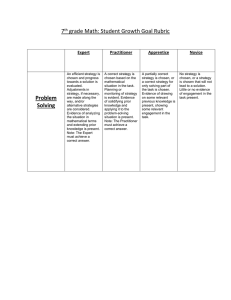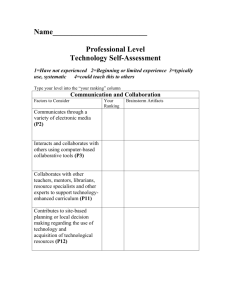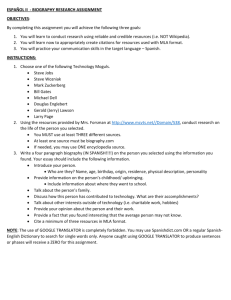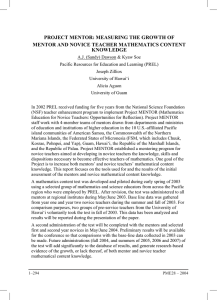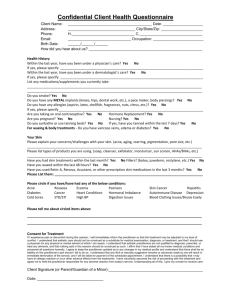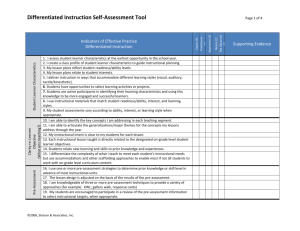Grade 4 Sample with Data - Arlington Public Schools
advertisement
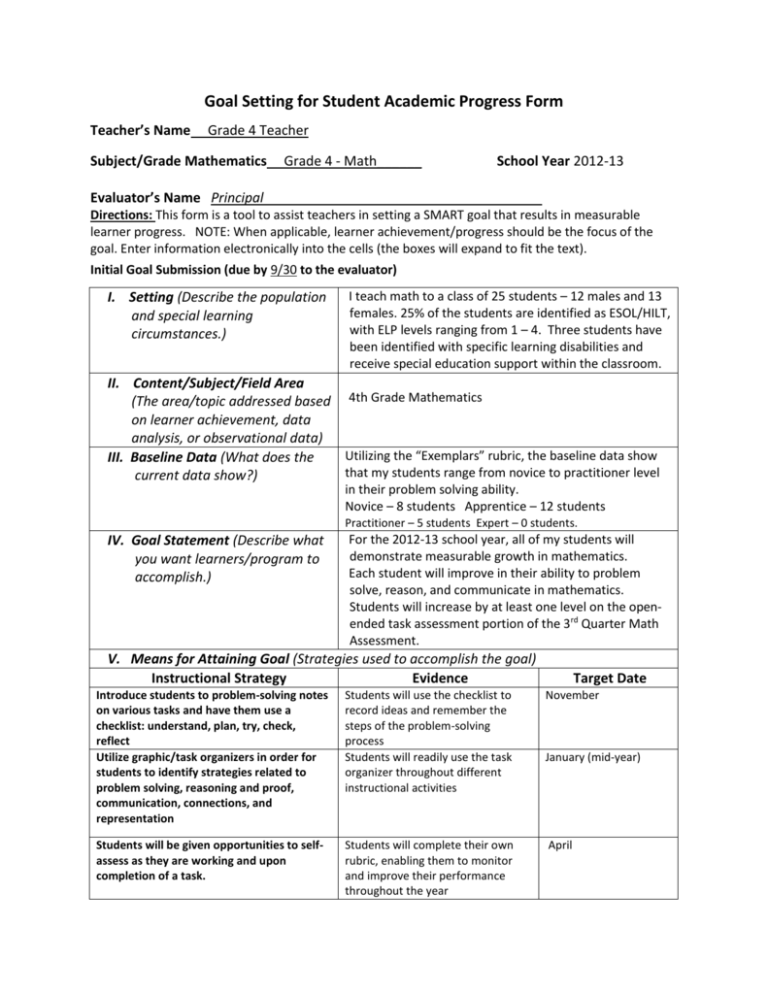
Goal Setting for Student Academic Progress Form Teacher’s Name Grade 4 Teacher Subject/Grade Mathematics Grade 4 - Math______ School Year 2012-13 Evaluator’s Name Principal Directions: This form is a tool to assist teachers in setting a SMART goal that results in measurable learner progress. NOTE: When applicable, learner achievement/progress should be the focus of the goal. Enter information electronically into the cells (the boxes will expand to fit the text). Initial Goal Submission (due by 9/30 to the evaluator) I. Setting (Describe the population and special learning circumstances.) I teach math to a class of 25 students – 12 males and 13 females. 25% of the students are identified as ESOL/HILT, with ELP levels ranging from 1 – 4. Three students have been identified with specific learning disabilities and receive special education support within the classroom. II. Content/Subject/Field Area (The area/topic addressed based 4th Grade Mathematics on learner achievement, data analysis, or observational data) Utilizing the “Exemplars” rubric, the baseline data show III. Baseline Data (What does the that my students range from novice to practitioner level current data show?) in their problem solving ability. Novice – 8 students Apprentice – 12 students Practitioner – 5 students Expert – 0 students. IV. Goal Statement (Describe what you want learners/program to accomplish.) For the 2012-13 school year, all of my students will demonstrate measurable growth in mathematics. Each student will improve in their ability to problem solve, reason, and communicate in mathematics. Students will increase by at least one level on the openended task assessment portion of the 3rd Quarter Math Assessment. V. Means for Attaining Goal (Strategies used to accomplish the goal) Instructional Strategy Evidence Target Date Introduce students to problem-solving notes on various tasks and have them use a checklist: understand, plan, try, check, reflect Utilize graphic/task organizers in order for students to identify strategies related to problem solving, reasoning and proof, communication, connections, and representation Students will use the checklist to record ideas and remember the steps of the problem-solving process Students will readily use the task organizer throughout different instructional activities November Students will be given opportunities to selfassess as they are working and upon completion of a task. Students will complete their own rubric, enabling them to monitor and improve their performance throughout the year April January (mid-year) Utilize problem solving tasks that capitalize on student’s interests Collection of tasks Ongoing Use shortened or tiered tasks to support students who might benefit from fewer and simpler words. Analyze student work samples with grade level team during PLC, use samples from each level. Collection of tasks Ongoing Student rubrics, group reflection, student data Quarterly Beginning of Year Novice Alex Brian Kelly John Miles Kumar Jose Kendel 8 Apprentice Practitioner Will Katie Becky Sarah Margaret Denise Greg Erin Marsol Nick Crystal Angelique 12 Ali Calvin Jenifa Stephanie Brianna Apprentice Practitioner Brian Kelly John Kumar Kendel Will Alex Miles Jose Sarah Katie Margaret Greg Erin Marsol Nick Angelique Denise Expert 5 Third Quarter Novice 6 Expert Becky Brianna Crystal Ali Calvin Jenifa Stephanie 12 7
